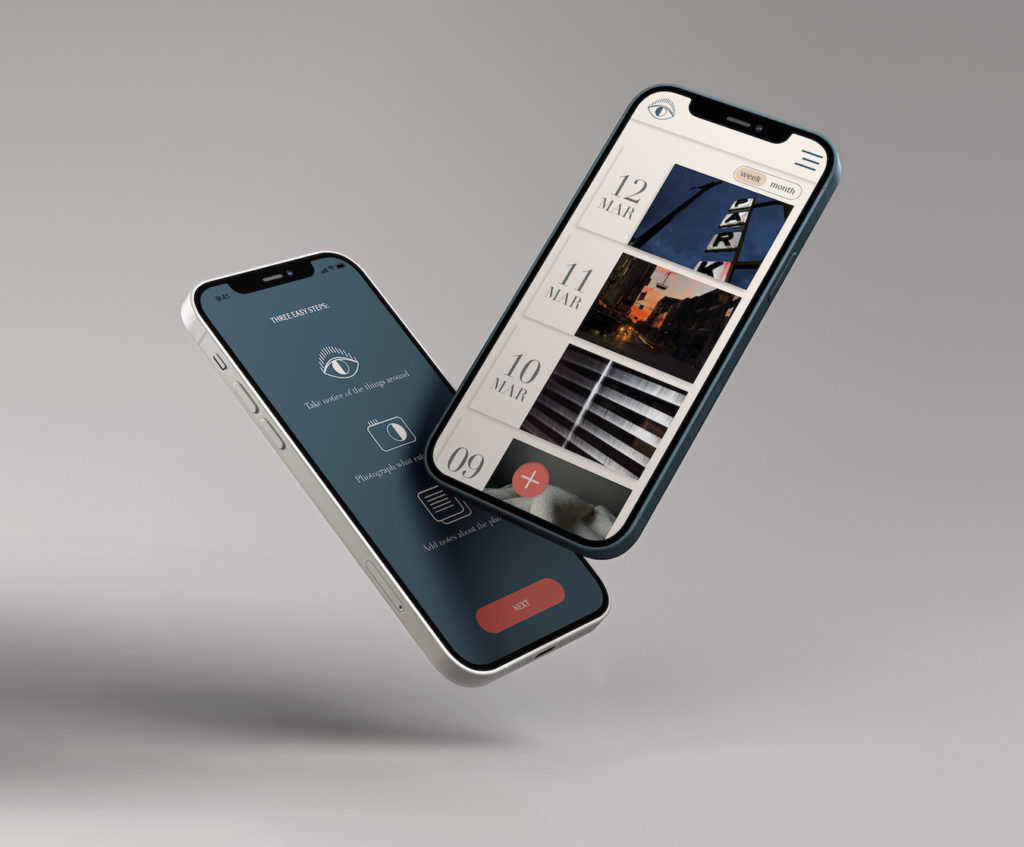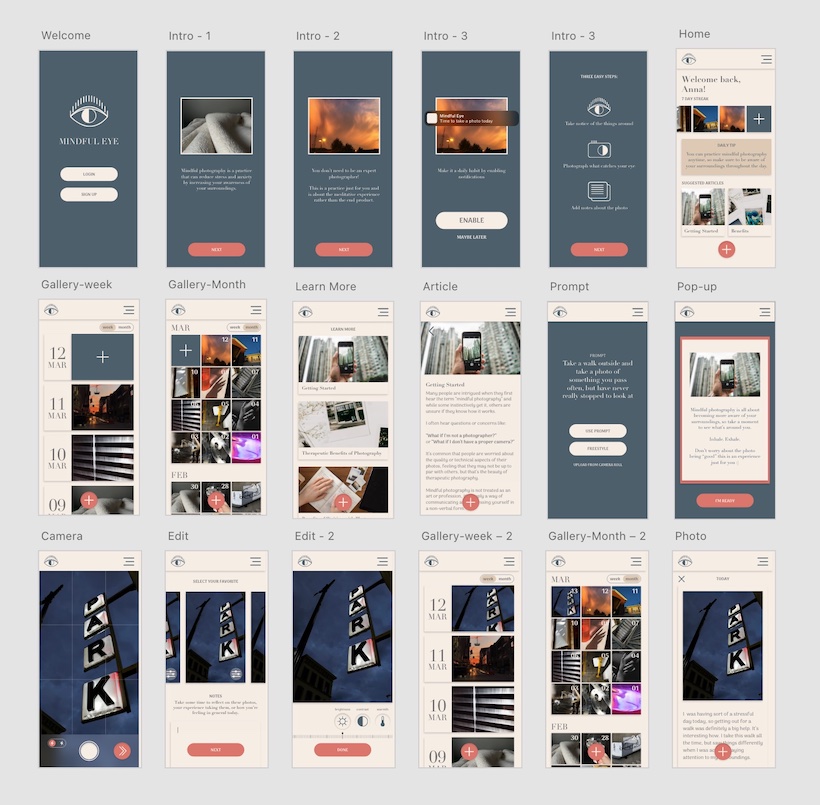Mindful Eye
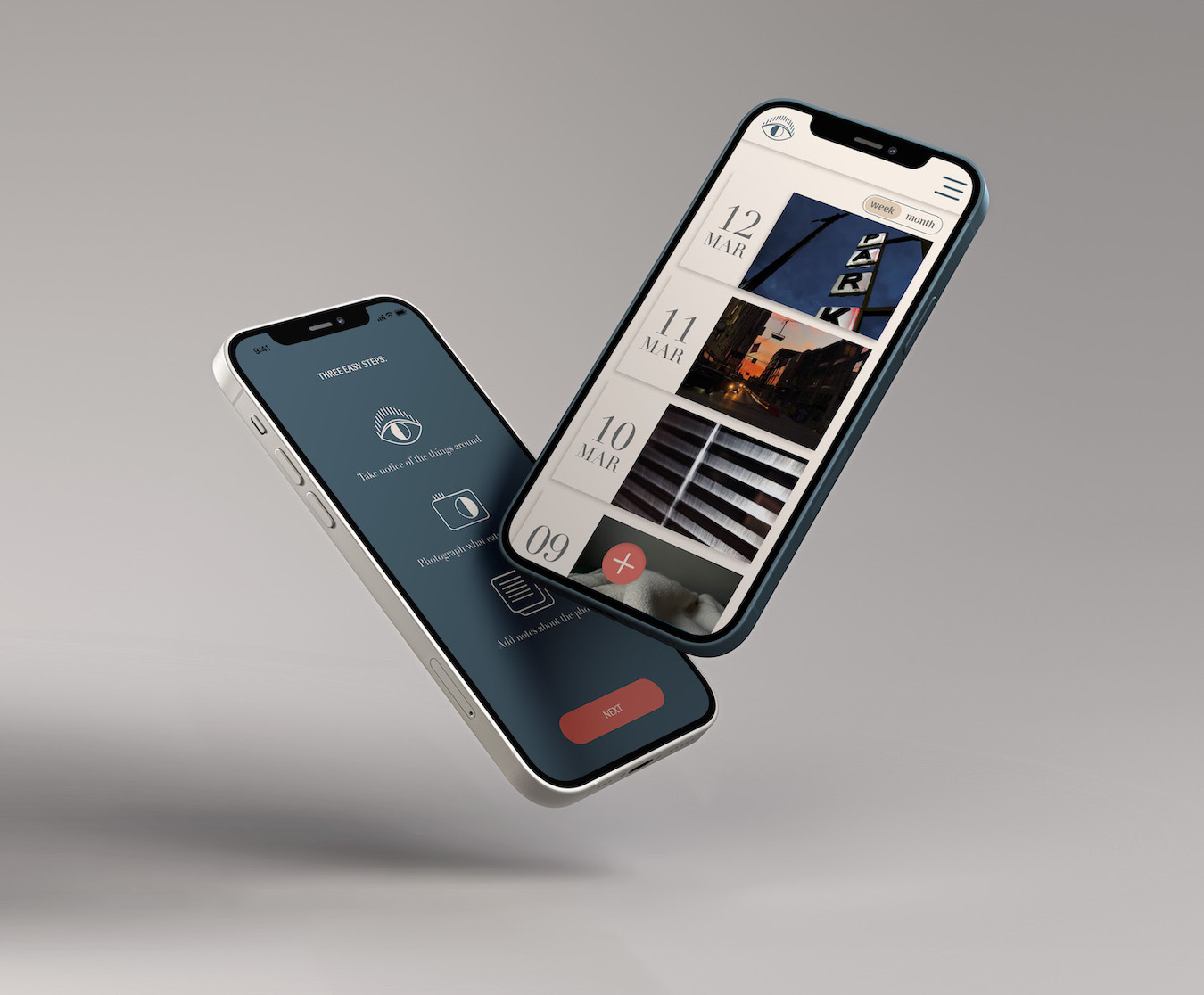
The Problem
In our modern world of social media and constant entertainment, we easily get caught up with comparison, overstimulation, and FOMO. How can we become more attentive of and grateful for the present moment?
How can 18–24 year-old females in Ohio reduce anxiety and become more appreciative of life through the use of mindful photography in day-to-day life?
Success Statement
By using the Mindful Eye app, users will easily be able to make mindful photography a part of their daily routine. Users will learn about the benefits of mindful photography, and with time, will experience them firsthand
Target Audience
18–24 year-old females in Ohio
Research
As I set out, I knew I wanted to create a tool to aid mindfulness, but didn’t know what kind. In some initial research into mindfulness techniques, I discovered one called mindful photography and it caught my attention.
Mindful photography is a meditation practice where you use a camera as an extension of yourself in order to increase awareness of what’s around you. It is a grounding technique that helps increase gratitude in the small things.
Literature Review
Upon discovering mindful photography, I needed to learn more about its benefits and how to do it, so I turned to academic sources and conducted a literature review. I found that mindful photography has been proven to reduce depression and anxiety. One study found that taking just one photo a day improved wellbeing in participants through in areas including self-care and potential for reminiscence.
When looking into the logistics of how to practice mindful photography, I found that the focus should be on the activity of photo-taking over the end result of the photos. Because of this, phone cameras are best for this practice. That way, users focus on taking in what’s around them and don’t get caught up in the technical details of a more complicated camera.
Competitive Analysis
I began exploring what’s already out there through a competitive analysis of mindfulness tools currently on the market. This analysis included tools such as Headspace, Calm, Happy Things :), The CBT and Art Activity Book, and The One Project. By analyzing these and looking through many others, I became aware that the market of mindfulness tools is very saturated, but there is a gap when it comes to mindful photography. In fact, The One Project was the only tool I found focused on mindful photography.
Survey
I surveyed my target audience in order to learn more about several key points: baseline information, what mindfulness activities they already practice, and to gauge their interest in mindful photography. I found that, on a scale 1–10, respondents had an average rating of 6.89 for how often they feel anxious and 4.19 for feeling depressed. These numbers reinforced that this is a good target demographic to start practicing mindful photography.
When asked about hesitations to starting mindful photography, the most common concern was about the time commitment required, and the second most common was about not knowing enough about it. These insights informed my design choices. I knew that I needed to create a tool that was beginner friendly—one that doesn’t take too much time and makes mindful photography easy.
Design Process + Testing
App Flow
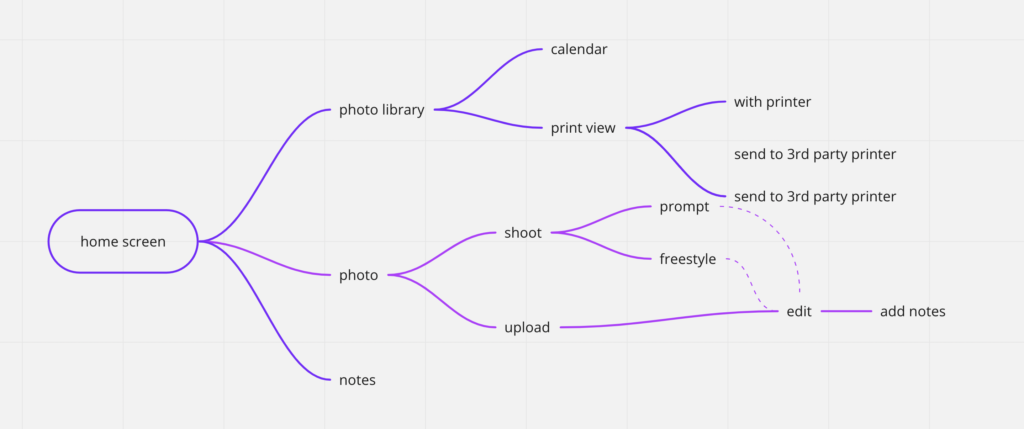
Wireframes
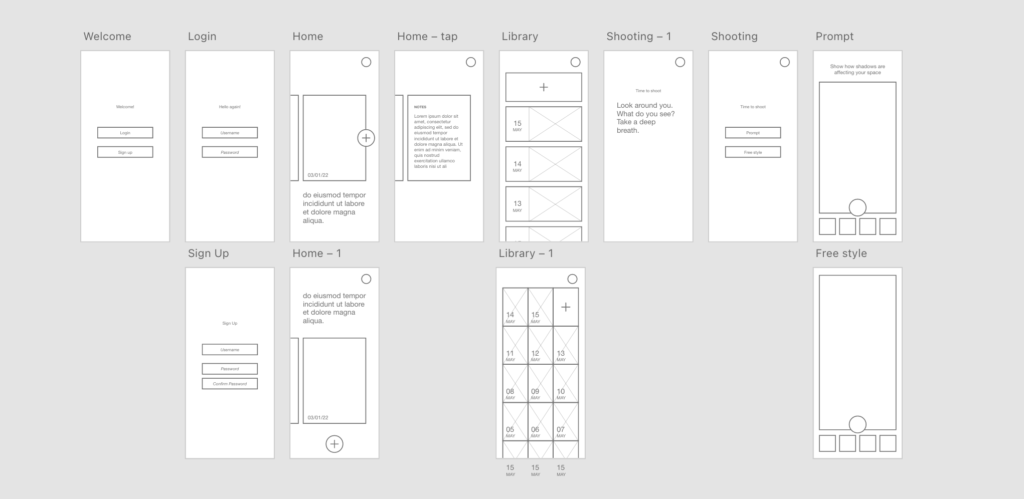
Moodboards

Brand Guide
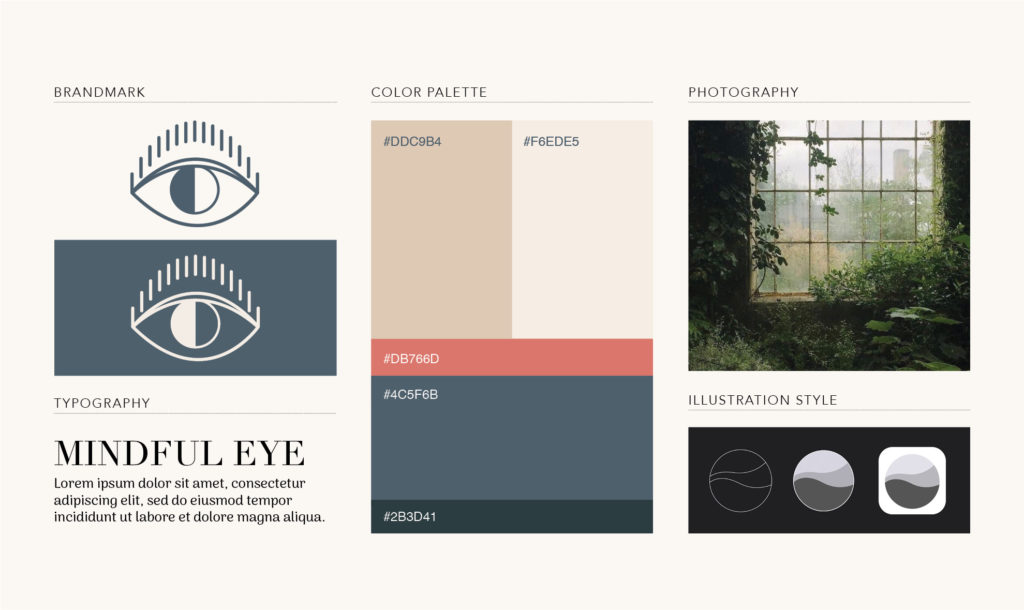
Design Solution
